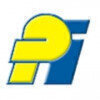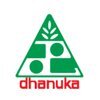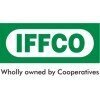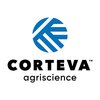Filter interviews by
Aarti Industries Senior Supervisor Interview Questions and Answers
16 Interview questions
A distillation column is a vertical tower used in chemical processes to separate mixtures based on their boiling points.
Distillation column is used in industries such as oil refining, petrochemicals, and chemical manufacturing.
It works on the principle of heating a mixture to vaporize the more volatile components and then condensing them back into liquid form.
The column consists of trays or packing materials that ...
Open Loop is a control system where the output has no effect on the input or control action.
Open Loop is a one-way communication system.
It does not use feedback to adjust the output.
The output is predetermined and does not change based on the input.
Examples include a toaster, where the heating element operates for a fixed time regardless of the toast's actual doneness, or a traffic signal that follows a fixed timi...
Change of reaction refers to the alteration in response or behavior due to a stimulus or event.
Change of reaction is a psychological concept that involves a shift in response or behavior.
It occurs when an individual's reaction to a particular stimulus or event changes over time.
This change can be influenced by various factors such as experience, learning, or external influences.
For example, if someone initially re...
PSV stands for Pressure Safety Valve.
PSV is a type of valve used to protect equipment from overpressure.
It automatically opens when the pressure exceeds a set limit, releasing excess pressure.
PSVs are commonly used in industries such as oil and gas, chemical, and power plants.
They help prevent equipment damage, explosions, and other safety hazards.
PSVs are designed to meet specific pressure and flow requirements.
T...
I expect a competitive salary that reflects my experience and the responsibilities of the Senior Supervisor role.
I am looking for a salary that is commensurate with my skills and experience.
I would like to be compensated fairly for the added responsibilities of the Senior Supervisor position.
I am open to discussing salary based on the overall compensation package and benefits offered.
I have researched the market r...
There are several types of level transmitters used in various industries.
Capacitance level transmitters
Ultrasonic level transmitters
Radar level transmitters
Differential pressure level transmitters
Guided wave radar level transmitters
Conductivity level transmitters
Float level transmitters
Centrifugal pumps work by converting rotational energy into kinetic energy to move fluid.
Centrifugal pumps use an impeller to create centrifugal force, which pushes the fluid towards the pump outlet.
The impeller spins at high speed, creating a low-pressure area at the center and a high-pressure area at the outer edges.
Fluid enters the pump through the suction inlet and is accelerated by the impeller, increasing it...
LooP reactor is a type of reactor used in chemical processes for continuous flow reactions.
LooP reactor allows for continuous processing of reactions, leading to higher efficiency and productivity.
It is commonly used in the pharmaceutical and fine chemical industries.
The design of LooP reactor enables precise control over reaction parameters such as temperature, pressure, and residence time.
DCS stands for Distributed Control System. It is a computerized control system used to monitor and control industrial processes.
DCS is composed of multiple control units distributed throughout a plant or facility.
It uses a network to communicate and exchange data between the control units.
DCS provides centralized control and monitoring of various processes, such as temperature, pressure, flow, and level.
It allows ...
P&I'd stands for Planning and Implementation Document.
P&I'd is a document that outlines the planning and implementation process for a project or task.
It includes details such as project objectives, timelines, resources required, and steps to be followed.
P&I'd helps in ensuring a systematic and organized approach to project management.
Example: A P&I'd for a software development project would include the project sco...
Aarti Industries Senior Supervisor Interview Experiences
3 interviews found
(4 Questions)
- Q1. What is p&I'd ??
- Ans.
P&I'd stands for Planning and Implementation Document.
P&I'd is a document that outlines the planning and implementation process for a project or task.
It includes details such as project objectives, timelines, resources required, and steps to be followed.
P&I'd helps in ensuring a systematic and organized approach to project management.
Example: A P&I'd for a software development project would include the project scope, d...
- Q2. Please tell about your process diagram
- Ans.
My process diagram outlines the steps involved in managing a team and ensuring efficient operations.
The diagram starts with the identification of team goals and objectives.
It then moves on to the allocation of tasks and responsibilities to team members.
Regular communication and feedback loops are established to monitor progress and address any issues.
Performance evaluations and coaching sessions are conducted to suppor...
- Q3. What is hydrogenation ??
- Ans.
Hydrogenation is a chemical process that involves the addition of hydrogen to a compound, typically an unsaturated hydrocarbon.
Hydrogenation is commonly used in the food industry to convert liquid vegetable oils into solid fats, such as margarine.
It is also used in the production of various chemicals, such as hydrogenated oils for use in soaps and detergents.
The process of hydrogenation can change the physical properti...
- Q4. How DCS work ??
- Ans.
DCS stands for Distributed Control System. It is a computerized control system used to monitor and control industrial processes.
DCS is composed of multiple control units distributed throughout a plant or facility.
It uses a network to communicate and exchange data between the control units.
DCS provides centralized control and monitoring of various processes, such as temperature, pressure, flow, and level.
It allows for r...
(6 Questions)
- Q1. What is unit operation and unit process ??
- Ans.
Unit operation refers to a single step in a chemical process, while unit process involves a series of unit operations.
Unit operation is a distinct step in a chemical process.
Unit process is a combination of multiple unit operations.
Unit operation focuses on a specific physical or chemical change.
Unit process involves the transformation of raw materials into desired products.
Examples of unit operations include distillat...
- Q2. If u are in DCS suddenly fire in plant .what action u take ??
- Q3. What is distillation ??
- Ans.
Distillation is a process of separating components of a liquid mixture based on their different boiling points.
Distillation involves heating a liquid mixture to vaporize the more volatile components.
The vapor is then cooled and condensed back into a liquid, resulting in the separation of the components.
The component with the lower boiling point will vaporize first and be collected separately.
Distillation is commonly us...
- Q4. What is reflux ratio ??
- Ans.
Reflux ratio is the ratio of the liquid refluxed back to the distillation column to the liquid product withdrawn from the column.
Reflux ratio is an important parameter in distillation processes.
It helps in controlling the separation efficiency of the column.
A higher reflux ratio leads to better separation but requires more energy.
Reflux ratio can be adjusted to optimize the column performance.
For example, in a distilla...
- Q5. How centrifugal pump work ??
- Ans.
Centrifugal pumps work by converting rotational energy into kinetic energy to move fluid.
Centrifugal pumps use an impeller to create centrifugal force, which pushes the fluid towards the pump outlet.
The impeller spins at high speed, creating a low-pressure area at the center and a high-pressure area at the outer edges.
Fluid enters the pump through the suction inlet and is accelerated by the impeller, increasing its kin...
- Q6. What is PSV ??
- Ans.
PSV stands for Pressure Safety Valve.
PSV is a type of valve used to protect equipment from overpressure.
It automatically opens when the pressure exceeds a set limit, releasing excess pressure.
PSVs are commonly used in industries such as oil and gas, chemical, and power plants.
They help prevent equipment damage, explosions, and other safety hazards.
PSVs are designed to meet specific pressure and flow requirements.
They a...
(3 Questions)
- Q1. What is LooP reactor ??
- Ans.
LooP reactor is a type of reactor used in chemical processes for continuous flow reactions.
LooP reactor allows for continuous processing of reactions, leading to higher efficiency and productivity.
It is commonly used in the pharmaceutical and fine chemical industries.
The design of LooP reactor enables precise control over reaction parameters such as temperature, pressure, and residence time.
- Q2. How many type of Level transmeeter ??
- Ans.
There are several types of level transmitters used in various industries.
Capacitance level transmitters
Ultrasonic level transmitters
Radar level transmitters
Differential pressure level transmitters
Guided wave radar level transmitters
Conductivity level transmitters
Float level transmitters
- Q3. What is RTD ??
- Ans.
RTD stands for Resistance Temperature Detector. It is a type of temperature sensor that measures temperature by correlating the resistance of the sensor with temperature.
RTD is commonly used in industrial applications for accurate temperature measurement.
It is based on the principle that the electrical resistance of a metal changes with temperature.
RTDs are known for their high accuracy, stability, and repeatability.
Th...
(4 Questions)
- Q1. What is your family background ??
- Q2. What sellary u except ??
- Ans.
I expect a competitive salary that reflects my experience and the responsibilities of the Senior Supervisor role.
I am looking for a salary that is commensurate with my skills and experience.
I would like to be compensated fairly for the added responsibilities of the Senior Supervisor position.
I am open to discussing salary based on the overall compensation package and benefits offered.
I have researched the market rates ...
- Q3. If u are selected after how many days u will join ??
- Q4. Sellary compansation ??
(3 Questions)
- Q1. What is distillation column
- Ans.
A distillation column is a vertical tower used in chemical processes to separate mixtures based on their boiling points.
Distillation column is used in industries such as oil refining, petrochemicals, and chemical manufacturing.
It works on the principle of heating a mixture to vaporize the more volatile components and then condensing them back into liquid form.
The column consists of trays or packing materials that provi...
- Q2. Types of Reaction
- Ans.
Types of Reaction
Chemical reactions can be classified into several types based on the changes that occur during the reaction.
Common types of reactions include synthesis, decomposition, combustion, displacement, and redox reactions.
Synthesis reactions involve the combination of two or more substances to form a new compound.
Decomposition reactions involve the breakdown of a compound into its constituent elements or simpl...
- Q3. What is open Loop
- Ans.
Open Loop is a control system where the output has no effect on the input or control action.
Open Loop is a one-way communication system.
It does not use feedback to adjust the output.
The output is predetermined and does not change based on the input.
Examples include a toaster, where the heating element operates for a fixed time regardless of the toast's actual doneness, or a traffic signal that follows a fixed timing pa...
(2 Questions)
- Q1. What is change of Reaction
- Ans.
Change of reaction refers to the alteration in response or behavior due to a stimulus or event.
Change of reaction is a psychological concept that involves a shift in response or behavior.
It occurs when an individual's reaction to a particular stimulus or event changes over time.
This change can be influenced by various factors such as experience, learning, or external influences.
For example, if someone initially reacts ...
- Q2. What is Hydrogen gas
- Ans.
Hydrogen gas is a colorless, odorless, and highly flammable gas.
Hydrogen gas is the lightest and most abundant element in the universe.
It is commonly used as a fuel in various industries, including transportation and energy production.
Hydrogen gas can be produced through various methods, such as electrolysis of water or steam reforming of natural gas.
It is used in the production of ammonia, methanol, and other chemical...
I applied via Walk-in and was interviewed before Sep 2022. There were 4 interview rounds.

(2 Questions)
- Q1. My education & experience background
- Q2. Safety questions
(1 Question)
- Q1. Static equipment questions
General information general knowledge
Top trending discussions






Interview questions from similar companies

I applied via Recruitment Consultant and was interviewed in May 2021. There were 3 interview rounds.
Interview Questionnaire
1 Question
- Q1. All questions ask on technical field which we have mentioned in our resume
Interview Preparation Tips

I appeared for an interview in Mar 2025, where I was asked the following questions.
- Q1. Production process
- Q2. Production plan
- Ans.
A production plan outlines the strategy for manufacturing goods efficiently and effectively.
Define production goals: Set clear, measurable objectives for output and quality.
Assess resources: Evaluate available materials, labor, and machinery to meet production needs.
Create a timeline: Develop a schedule that aligns production activities with demand forecasts.
Implement quality control: Establish procedures to ensure pro...
Interview Preparation Tips

I applied via Referral and was interviewed in Dec 2023. There was 1 interview round.
(2 Questions)
- Q1. Work experience
- Q2. Salary expectation

Senior Engineer Interview Questions & Answers
Deccan Fine Chemicalsposted on 3 May 2025
I appeared for an interview before May 2024, where I was asked the following questions.
- Q1. Safety ppe,jsa,project safety
- Q2. Process safety,general safety welding

Deputy Manager Interview Questions & Answers
Coromandel Internationalposted on 17 May 2022
I appeared for an interview before May 2021.
(2 Questions)
- Q1. Tell me about yourself
- Ans.
Dynamic professional with 7 years of experience in management, skilled in team leadership and project execution.
Background: I hold a degree in Business Administration from XYZ University.
Experience: Over 7 years in management roles, leading teams to achieve project goals.
Skills: Proficient in strategic planning and resource allocation, demonstrated by successfully managing a $1M project.
Leadership: I believe in empower...
- Q2. Tell me about your work experience
- Ans.
I have over 8 years of experience in project management, team leadership, and process optimization across various industries.
Led a team of 10 in a successful project that increased efficiency by 30% within six months.
Implemented a new project management software that streamlined communication and reduced project timelines by 20%.
Conducted training sessions for staff, enhancing their skills and improving overall team pe...
(1 Question)
- Q1. Tell about safety culture in your current organization
Interview Preparation Tips

Assistant Manager Interview Questions & Answers
FMC Corporationposted on 18 Aug 2022

(4 Questions)
- Q1. Brief self Introduction
- Q2. Work experience and job role in different company
- Ans.
I have diverse experience in management roles across various industries, enhancing team performance and operational efficiency.
Managed a team of 10 at XYZ Corp, improving project delivery time by 20%.
Implemented a new inventory system at ABC Ltd, reducing costs by 15%.
Led cross-functional teams in a tech startup, resulting in a successful product launch.
Conducted training sessions for new hires, increasing onboarding e...
- Q3. Best achievement in career.
- Q4. Fundamental and project chemistry
(2 Questions)
- Q1. Job summary and expected CTC
- Q2. Notice period information
(1 Question)
- Q1. Brief discussion with head
Interview Preparation Tips

I applied via Approached by Company and was interviewed in Jun 2022. There were 5 interview rounds.

(1 Question)
- Q1. 1. Basic questions on Instrumentation 2. Selection of MOC 3. Hazardous area classification 4. Improvements in Process safety through automation 5. Size of projects and team handled 6. Resource management
(1 Question)
- Q1. This round was with Site head. He basically asked questions related to MOC selection and HAC
(1 Question)
- Q1. This round was with VP Manufacturing. He asked questions related to SIL classification & application, Improvements I have done in Process safety areas and IIoT projects
(1 Question)
- Q1. Manpower management, Skill development of team, Crisis management
Interview Preparation Tips
Aarti Industries Interview FAQs
Tell us how to improve this page.
Aarti Industries Interviews By Designations
- Aarti Industries Assistant Manager Interview Questions
- Aarti Industries Office Trainee Interview Questions
- Aarti Industries Deputy Manager Interview Questions
- Aarti Industries DCS Operator Interview Questions
- Aarti Industries Executive Production Interview Questions
- Aarti Industries Process Engineer Interview Questions
- Aarti Industries Executive Interview Questions
- Aarti Industries Graduate Engineer Trainee (Get) Interview Questions
- Show more
Interview Questions for Popular Designations
Overall Interview Experience Rating
based on 3 interview experiences
Difficulty level
Duration
Interview Questions from Similar Companies
Aarti Industries Senior Supervisor Reviews and Ratings
based on 21 reviews
Rating in categories
|
Assistant Manager
664
salaries
| ₹5.6 L/yr - ₹11.5 L/yr |
|
Deputy Manager
566
salaries
| ₹8.1 L/yr - ₹14 L/yr |
|
Executive
520
salaries
| ₹3.1 L/yr - ₹7.2 L/yr |
|
Plant Operator
353
salaries
| ₹1.6 L/yr - ₹5.2 L/yr |
|
Senior Executive
343
salaries
| ₹4.5 L/yr - ₹9 L/yr |

UPL

Coromandel International

PI Industries

Rallis India
- Home >
- Interviews >
- Aarti Industries Interview Questions













